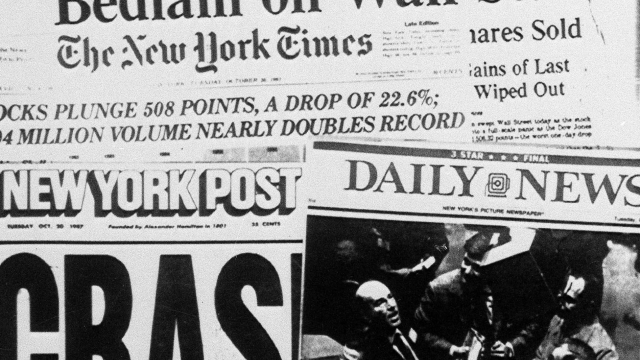
Everyone forgets the most important thing about the 1987 Black Monday stock market crash
http://ift.tt/2gmXl24
AP
Thirty years ago, the Dow Jones industrial average plunged by 22.6% — a gut-wrenching 508 points — to 1,738.74 on what is now referred to as Black Monday.
It was by far the largest one-day percentage drop in US stock market history. That would be the equivalent of the Dow crashing by about 5,233 points in a single day, down to 17,921.
But as scary as that October day was, US economic growth remained resilient, and gross-domestic-product growth never went negative. This is arguably the most important thing to remember about the whole ordeal.
UBS
That’s not to say the stock market has zero effect on the economy. After all, a huge sell-off could slow the economy and even lead to a recession.
But analysts have previously suggested stock-market crashes typically lead to less severe recessions than something like, for example, a housing crash or a credit crisis.
Lombard Street Research’s Dario Perkins once compared the effect on GDP from both the dotcom stock market crash of 2000 and the subprime-mortgage crisis of 2007-2008. GDP continued to rise during the former, but it got slammed in the wake of the latter.
Lombard Street Research
Going back to stocks, it’s encouraging to remember the stock market didn’t die Black Monday. The Dow is up about 1,231% since that fateful October day, to around 23,150.
NOW WATCH: RAY DALIO: You have to bet against the consensus and be right to be successful in the markets
See Also:
- A flawed argument used by Warren Buffett could be setting stocks up for ‘one of the worst disasters in history’
- Traders are betting big against gun stocks
- STOCKS CLIMB TO RECORD HIGHS: Here’s what you need to know
SEE ALSO: The 27 scariest moments of the financial crisis
business
via Business Insider http://ift.tt/eKERsB
